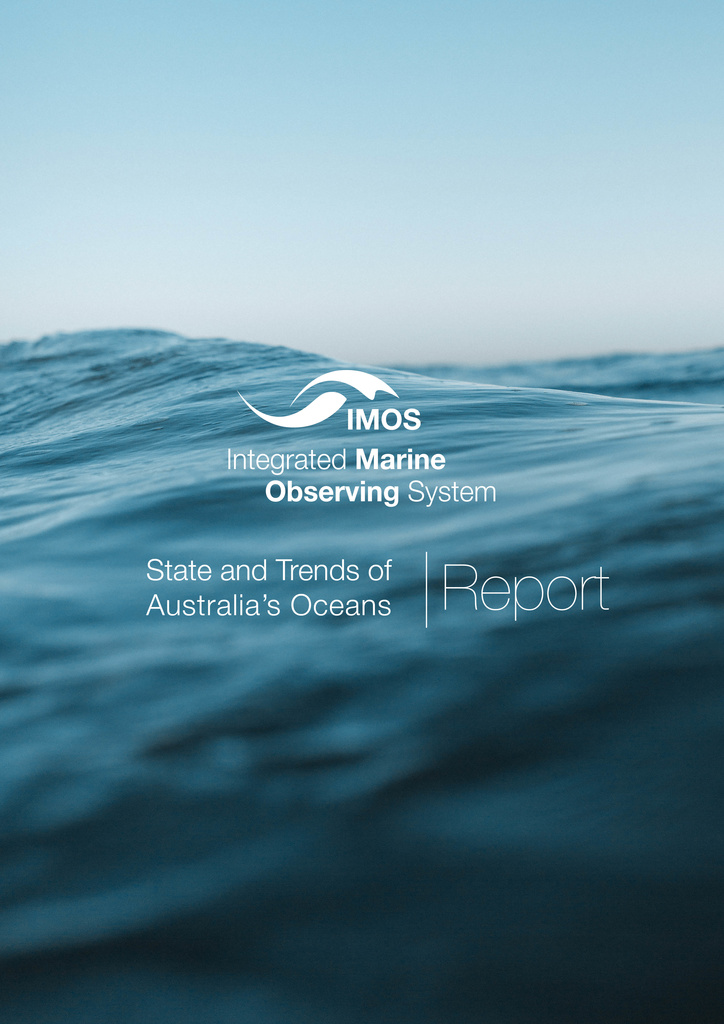Our first State and Trends of Australia’s Oceans Report was launched in Hobart today.
Marine assessments are important tools for examining the state and trends of marine systems at regional, national, and global scales. The most robust assessments are data-driven and underpinned by time series of internationally accepted ecosystem indicators, based on measurement of physical, chemical, and biological variables.
The collating, synthesising, and reporting of meaningful indicators of marine ecosystem health provides information in a clear way to a broad, and often non-scientific audience.
IMOS is uniquely positioned to provide time series data that can underpin assessments of Australia’s vast and valuable marine estate.
The State and Trends of Australia’s Oceans Report will provide a baseline for contribution to all marine assessments into the future. It was launched today in Hobart, and is available via the State and Trends of Australia’s Oceans Report website https://www.imosoceanreport.org.au/
The time series in the report provide scientifically robust information on state and trends of pelagic ecosystem indicators for Australia’s vast and valuable marine estate. Many of these indicators have not been previously available.
Against a background of long-term global ocean warming and acidification, regional variations are revealed and the influences of seasonal climate variability and boundary current variability are shown. There is evidence of extreme events, such as marine heatwaves, increasing in frequency and intensity.
Importantly, numerous biological responses to change and variability in the physical/chemical environment are shown. Many of these have potential socio-economic and policy implications which are outlined in each of the time series’ ‘implications for people and ecosystems’ sections.
The improved understanding of connections between physical, chemical, and biological variables provided in the State and Trends of Australia’s Oceans Report is a significant step in describing these links and the ongoing changes they face. This in turn increases our confidence in modelling of future states across the Australian marine environment, to inform government managers and policy makers, and marine industries, in the context of sustainable development.
The role of IMOS as a national research infrastructure is to build large datasets and long time series for use and reuse. The process to produce this report is designed to ensure that datasets and time series available within Australia are organised, analysed, and interpreted so that they can be used in relevant assessment and reporting processes as required.
Making our datasets and time series ‘assessment ready’ is part of the IMOS strategy to plan for impact. This includes data collected by IMOS facilities as well as additional data contributed by partners through the Australian Ocean Data Network (AODN).
About the report
The report brought together 70 scientists from across 16 institutions working with available datasets, mostly of ten years length or longer. New analyses were undertaken to produce scientifically robust information about the state and trends of ecosystem indicators relevant to the Australian marine environment and its bioregions.
A total of 27 time series datasets are included in the State and Trends of Australia’s Oceans Report. They are grouped into four themes covering indicators of:
- the physical and chemical environment;
- biological productivity
- water quality; and
- marine animals (zooplankton, fish, sharks, and marine mammals).
All the time series used are of variables in the water column of the ocean, known as the pelagic zone. Before IMOS was established there was no systematic and sustained collection of data in the pelagic zone of Australia’s marine environment, limiting our ability to understand the state and trends of key ecosystem indicators. This report begins to address this huge gap.
The report contains succinct documents (of 4-6 pages) for each time series that are written in a common format by a group of subject matter experts.
There is a Rationale and a section on Implications for people and ecosystems. The analysis Methods used are explained. Results and Interpretation are provided through a combination of brief narratives and downloadable graphs and maps. Data Sources are acknowledged, and References to relevant scientific literature are provided.
Each time series document has been assigned its own digital object identifier (DOI).
The goal has been to ensure that the report will be relevant to national, global, and regional marine assessments and therefore useful to the scientific community, government managers and policy makers, and marine industries.
